Executive Summary: A thoughtful ESG strategy is increasingly seen as a must-have for firms regardless of industry or sector. While emerging green technologies offer incredible opportunities to generate value, there are risks and potential pitfalls, too. In particular, close attention should be paid to ESG definitions and reporting standards, as the lack of established guidelines can lead to inefficacy or be used to cover up green-washing. Finally, the proposed SEC guidelines for carbon disclosure have the potential to massively shake up the ESG space and may dictate the conversation for years to come.
Many of the biggest topics in business today fall under the ESG (Environmental, Social, Governance) umbrella. From new SEC guidelines on carbon emissions to demands for diversity, equity and inclusion, successful firms need a strong stance on ESG to meet the demands of today and the challenges of the future.
In the past, social and environmental goals were seen as a trade-off to profit. But the rise of a new ESG discourse indicates a change in the conversation. Increasingly, environmental and social factors are viewed as a way to increase the long-term value and security of a firm.
“Very often, people are finding that firms that have a strong ESG stance and well-developed programs actually end up jointly maximizing shareholder value along with their contribution to society,” said Harbir Singh, Co-Director, Mack Institute for Innovation Management. “But that really calls for innovation.”
This need for innovation inspired our Spring 2022 conference topic, ESG As A Driver Of Value. Bringing together representatives from both academia and industry, the conference explored major topics related to ESG from a variety of perspectives. Below is a summary of the major ideas and discussions.
With a commitment to joining rigorous research with practical applications to help established firms navigate the risks and rewards of innovation, the Mack Institute regularly convenes meetings with stakeholders across many industries, including our corporate partners and the Wharton School’s global alumni network. Sign up for our newsletter here.
ESG 101
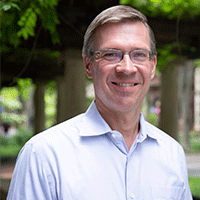 Panelist Witold Henisz, incoming Vice Dean and Faculty Director of the ESG Initiative at the Wharton School, kicked off the conference with a crash course on “ESG 101.” He emphasized that the attitude around ESG is changing from a “nice-to-have” to a “must-have” as executives and investors realize ESG can actually help you increase shareholder value, form stronger relationships, and circumvent risk.
Panelist Witold Henisz, incoming Vice Dean and Faculty Director of the ESG Initiative at the Wharton School, kicked off the conference with a crash course on “ESG 101.” He emphasized that the attitude around ESG is changing from a “nice-to-have” to a “must-have” as executives and investors realize ESG can actually help you increase shareholder value, form stronger relationships, and circumvent risk.
“Eighty to 90 percent of people in the C-suite and investment managers think that ESG factors are material,” Henisz said. “More than half of the board members think that ESG factors are material. More than 25% of all S&P 500 companies fielded questions on their last analyst earnings calls related to ESG. There’s a growing sense that they are material issues. And investors are increasingly asking questions about ESG to guide their investment decisions.”
But for as much attention ESG is getting, Henisz says the conversation is ultimately murky. The lack of standardized measurements leads to poor data collection and vague definitions. He gave the example of Facebook, which could either be considered a strong or weak ESG company, depending on the factors included in the analysis.
“It depends a lot on how you weigh the various factors,” explained Henisz. “On carbon emissions, Facebook does really well. But if you look at childhood and adolescent depression in young girls who are on Facebook and Instagram, the company does quite poorly. So depending on which factors you emphasize, Facebook looks really good or really poor.”
Ultimately Henisz sees a new way of looking at ESG that doesn’t rely on voluntary, unaudited corporate reporting, but takes into account data from governments, media and stakeholders.
“We need a new way of seeing value that doesn’t just focus on quarterly earnings and share price but considers the total impact a company has on all of its stakeholders influences shareholder value in the long-term. “
Powering Bitcoin With Renewables
 Ronald AngSiy, WG’15 and Senior Vice President at blockchain venture builder Intellabridge, spoke about energy usage concerns in the emerging cryptocurrency industry. An oft-cited study shows that Bitcoin, the world’s largest cryptocurrency, uses more electricity annually than the entire country of Argentina. This has long been seen as an inconvenient fact and a major limitation of the nascent crypto movement.
Ronald AngSiy, WG’15 and Senior Vice President at blockchain venture builder Intellabridge, spoke about energy usage concerns in the emerging cryptocurrency industry. An oft-cited study shows that Bitcoin, the world’s largest cryptocurrency, uses more electricity annually than the entire country of Argentina. This has long been seen as an inconvenient fact and a major limitation of the nascent crypto movement.
AngSiy openly acknowledges the energy usage problem. But he also says that the industry is incentivized and ready to fix it.
“People who mined Bitcoin want to make money,” he said. “They are for-profit, economics-driven. Their economic incentive is to get that energy as cheap as possible to make as much profit on mining Bitcoin as they can.”
AngSiy went on to describe how power sources for crypto could be found in the excess energy produced by renewables. Wind, solar, hydro and nuclear all produce excess energy that can be harnessed and put to use on the blockchain.
“The cheapest energy comes from wasted or excess energy,” he said. “One clear example of that is energy storage, like Tesla. Imagine if you have a Powerwall [an integrated battery system that stores solar energy for backup protection when the grid is down]. Your Powerwall gets charged everyday via its solar panels, but imagine if the excess energy in the Powerwall–the energy collected after it gets to 100% charge–was used to mine Bitcoin, peripherally.”
“Now your energy storage system can make money for you. It can be a passive income stream.”
Building a Fleet of EV Vehicles
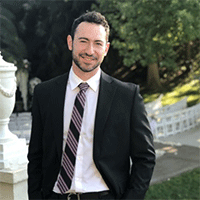 Guthrie Gintzler, Program Manager at Tesla, laid out a plan for reducing auto emissions via turning America’s heavy duty trucking fleets electric. While heavy duty vehicles like Class 8 Semis are only 1% of the vehicles on the road, Gintzler says they’re responsible for about 40% of road transport emissions.
Guthrie Gintzler, Program Manager at Tesla, laid out a plan for reducing auto emissions via turning America’s heavy duty trucking fleets electric. While heavy duty vehicles like Class 8 Semis are only 1% of the vehicles on the road, Gintzler says they’re responsible for about 40% of road transport emissions.
“[Trucks] are heavily utilized,” he said. “Folks that own a car use it about 5% of the time, but heavy-duty trucks are utilized as much as the driver possibly can, eight or more hours per day. They’re also higher energy consumption, meaning that to move one mile, you have to use more energy.”
Gintzler also says that focusing on trucking circumvents a challenge faced by the renewable energy industry as a whole: the need to shift demand away from fossil fuels (or, as he puts it: “We need to shift demand first before we can shift supply.”) But a plurality of all trucks are owned by the top 20 fleet operators. Targeting this group for EV adoption could reduce emissions by 2.5%.
Targeting fleets also helps to address concerns about charging, often cited as a hurdle to EV adoption.
“These truckers have standard routes,” says Gintzler. “They’re from centralized fleets, and they know exactly where they’re going to charge each day.”
Gintzler also says he believes EV fleets make better financial sense, even though electric vehicles have a higher cost up front than standard ones.
“I’ll pose a bit of a rhetorical question here,” he said. “If you’re a diesel fleet manager looking to reduce costs, which category would you target? You’re going to try to tackle your largest cost. That’s energy. Your best option to do that is with EV trucks. The cost of ownership of electric trucks is much lower than diesel.”
Using Emerging Technologies for Social Good
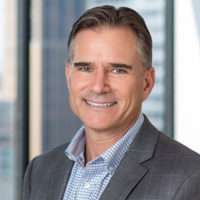
Scott Snyder, Mack Institute Senior Industry Fellow and Chief Digital Officer at EVERSANA, focused his presentation on the Social aspect of ESG. He offered a deep dive into how various emerging technologies can be harnessed for social good.
“All these technologies have been pushed forward at a much faster pace than what we expected,” he said. “But what do we do with them? And how do we help not only improve our companies, but improve society?”
Snyder gave examples from across the healthcare industry, including a “smart” asthma inhaler that detects poor air quality, VR experiences that show doctors what it’s like to live with ADHD or bipolar disorder, and AI strategies to close the healthcare gap in underserved communities.
“There are lots of opportunities to close that gap,” he said. “But if we’re going to use tools like AI to close it, we also have to bring those same [underserved] humans into the co-creation of these solutions. It can’t be viewed as AI doing something to us because then we don’t trust the black box or the algorithm.”
“But if we can see it as augmented intelligence instead of artificial intelligence, it can change how we think about it.”
Healthy Skepticism About ESG
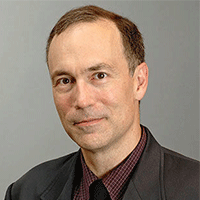 Eric Orts, Professor of Legal and Business Ethics and Professor of Management at the Wharton School, pushed back against what he called “the ESG bandwagon,” saying that while he broadly supported it, he was also skeptical of its current iteration.
Eric Orts, Professor of Legal and Business Ethics and Professor of Management at the Wharton School, pushed back against what he called “the ESG bandwagon,” saying that while he broadly supported it, he was also skeptical of its current iteration.
“You could think of ESG in business as a little bit like MSG in food,” he said. “It tastes really good. It seems like it’s really great. But it’s not really clear that it’s good for you.”
The first objection Orts raised was a lack of clear measurement standards, saying that in many cases ESG is just a “marketing label.”
“People who are on the inside of how funds are structured say the finances are still coming first, and ESG is just something to check off because investors want it. It’s much more of a marketing kind of technique than it is anything else. There’s no standard that is holding anyone accountable.”
He also suggested that the definition of ESG is too broad, tying together many issues that may be irrelevant or contradictory.
“You have Environmental, and you have Social, and you have Government. What is ESG then?” he said. “If you prefer Social—maybe you want to invest in firms that are very progressive on gender issues or racial justice issues—you can pick an S. Or if you really care about governance, you can pick G. Or if you really care about climate, as I do, you pick E.”
Orts stressed that for ESG to be transformative, we must carefully and objectively evaluate ESG claims. We must also be clear-eyed about the biggest issues in a given industry, sector or firm. He said that defining a clear problem (like reducing emissions, implementing anti-racist HR practices, or eliminating corporate ties with politicians who don’t prioritize climate issues) will go further than mindlessly following the “ESG fad.”
“What are the biggest problems that we face?” he said. “Forget about this very broad stakeholder theory of Corporate Social Responsibility or ESG. What do we really care about right now?”
New SEC Guidelines on ESG
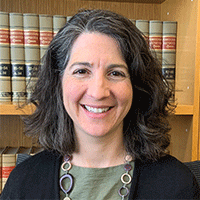 Sarah Light, Professor of Legal Studies and Business Ethics at the Wharton School, spoke about the proposed changes to the SEC’s guidelines around ESG investment practices. A recent statement from the SEC said that it sought to “establish disclosure requirements for funds and advisers that market themselves as having an ESG focus.”
Sarah Light, Professor of Legal Studies and Business Ethics at the Wharton School, spoke about the proposed changes to the SEC’s guidelines around ESG investment practices. A recent statement from the SEC said that it sought to “establish disclosure requirements for funds and advisers that market themselves as having an ESG focus.”
Light says this decision emerges from a long debate about the efficacy and propriety of ESG disclosures.
“One of the debates that has been raging is to what extent should the SEC require the disclosure of environmental information? Should it only mandate the disclosure of financially material environmental information? Or are enough reasonable investors needing information about the environmental impacts and risks that firms face in order to make investment decisions, even if those environmental impacts and risks might not be financially material?”
In 2010, the SEC issued an “informal guidance document” affirming that disclosure of certain climate risks were required by law.
“The evidence demonstrates that actual disclosures were quite uneven,” she said. “And there was actually very little SEC enforcement of this, even under Democratic administrations. You’d expect more, but there was not heavy enforcement.”
This changed in May 2022, when the SEC proposed stronger rules which required firms to disclose 1) climate-related risks and their actual or likely material impacts on the firm’s business, strategy, and outlook 2) how the firm governs climate-related risks at the board level and the management level and 3) the firm’s greenhouse gas emissions, among other disclosures.
Light says the proposed changes have drawn controversy, both from those who think the new rules go too far and those who think they don’t go too far enough.
“On the one hand, there are those who argue that the proposed rule doesn’t go far enough,” Light said. “It’s too limited in scope. First, it’s only climate related. It doesn’t include other environmental impacts and risks like biodiversity loss or water and forest management.”
“There’s also a fair amount of critique about the limited role for Scope 3 emissions disclosures, that they are limited to large firms when, in fact, for many industries, Scope 3 emissions tend to dwarf their Scope 1 and 2 emissions.”
Light says that critiques from those saying the proposed rules go too far focus either on First Amendment arguments (saying the disclosures are compelled speech that violate the First Amendment) or that the SEC is straying from its core mission of protecting investors. But Light stresses the need for better regulation in the “Wild West” environment of private disclosure standards.
“Right now, firms have a lot of control over what they choose to disclose pursuant to what standards and in what format. It’s not necessarily audited. It is not necessarily regulated, and firms cannot easily necessarily be held liable for the disclosures that they make,” she said.
“More than 2000 firms in the last 6 months have made pledges to become net zero by 2050. Investors want to know which of those pledges are real…investors want to know that because that’s going to affect their decisions in the marketplace, including decisions about what kind of regulatory environment should be governing the actual climate emissions of these companies.”
Towards A “Holistic” View of Emissions Impact
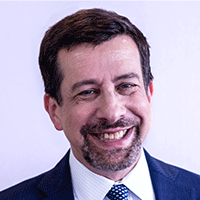 Michael Mandel, Vice President and Chief Economist at the Progressive Policy Institute, also spoke about the potential impacts of the proposed SEC guidelines.
Michael Mandel, Vice President and Chief Economist at the Progressive Policy Institute, also spoke about the potential impacts of the proposed SEC guidelines.
“These guidelines represent an impending shift from a company- or industry-centered view of the economy to a supply/value- chain-centric view, with business, regulatory, and policy implications,” he said.
He pointed to the emphasis on Scope 3 emissions, indirect emissions from “upstream” and “downstream” activities in a given value chain.
“Upstream emissions include emissions attributable to goods and services that the registrant acquires, the transportation of goods, employee, business travel, and commuting,” he said. “Downstream emissions include the use of registrant’s products, transportation of products, end of life treatment of sold products, and investments made by the registrant.”
It’s this broader focus on upstream and downstream emissions that Mandel predicts could be transformative.
“The proposed rules in their current form are aimed towards collecting information about the performance of the firm’s supply value change going beyond the boundaries of the firm,” he said. “This is a huge change in a regulatory sense. And it’s a huge change, not just for ESG, but for a whole range of different areas.”
Mandel argues that the decision represents an important shift away from viewing the economy as “atomized actors” and towards viewing it as a “connected network.” He is concerned about the additional costs that would be imposed on corporations by the SEC’s guidelines in their current form, noting that the burden of regulatory disclosure should be calibrated to the benefits. Nevertheless, he approves of the general shift to a “supply chain” view of the economy.
“We live in this enormous amount of interdependence,” he said. “But our economic and trade statistics have simply not kept up. As the old phrase goes: it’s not what you don’t know that gets you, it’s what you don’t know that you don’t know that gets you.”



